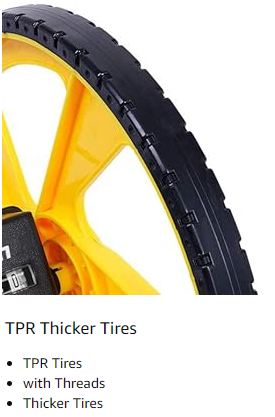
-
 Afrikaans
Afrikaans -
 Albanian
Albanian -
 Amharic
Amharic -
 Arabic
Arabic -
 Armenian
Armenian -
 Azerbaijani
Azerbaijani -
 Basque
Basque -
 Belarusian
Belarusian -
 Bengali
Bengali -
 Bosnian
Bosnian -
 Bulgarian
Bulgarian -
 Catalan
Catalan -
 Cebuano
Cebuano -
 Corsican
Corsican -
 Croatian
Croatian -
 Czech
Czech -
 Danish
Danish -
 Dutch
Dutch -
 English
English -
 Esperanto
Esperanto -
 Estonian
Estonian -
 Finnish
Finnish -
 French
French -
 Frisian
Frisian -
 Galician
Galician -
 Georgian
Georgian -
 German
German -
 Greek
Greek -
 Gujarati
Gujarati -
 Haitian Creole
Haitian Creole -
 hausa
hausa -
 hawaiian
hawaiian -
 Hebrew
Hebrew -
 Hindi
Hindi -
 Miao
Miao -
 Hungarian
Hungarian -
 Icelandic
Icelandic -
 igbo
igbo -
 Indonesian
Indonesian -
 irish
irish -
 Italian
Italian -
 Japanese
Japanese -
 Javanese
Javanese -
 Kannada
Kannada -
 kazakh
kazakh -
 Khmer
Khmer -
 Rwandese
Rwandese -
 Korean
Korean -
 Kurdish
Kurdish -
 Kyrgyz
Kyrgyz -
 Lao
Lao -
 Latin
Latin -
 Latvian
Latvian -
 Lithuanian
Lithuanian -
 Luxembourgish
Luxembourgish -
 Macedonian
Macedonian -
 Malgashi
Malgashi -
 Malay
Malay -
 Malayalam
Malayalam -
 Maltese
Maltese -
 Maori
Maori -
 Marathi
Marathi -
 Mongolian
Mongolian -
 Myanmar
Myanmar -
 Nepali
Nepali -
 Norwegian
Norwegian -
 Norwegian
Norwegian -
 Occitan
Occitan -
 Pashto
Pashto -
 Persian
Persian -
 Polish
Polish -
 Portuguese
Portuguese -
 Punjabi
Punjabi -
 Romanian
Romanian -
 Russian
Russian -
 Samoan
Samoan -
 Scottish Gaelic
Scottish Gaelic -
 Serbian
Serbian -
 Sesotho
Sesotho -
 Shona
Shona -
 Sindhi
Sindhi -
 Sinhala
Sinhala -
 Slovak
Slovak -
 Slovenian
Slovenian -
 Somali
Somali -
 Spanish
Spanish -
 Sundanese
Sundanese -
 Swahili
Swahili -
 Swedish
Swedish -
 Tagalog
Tagalog -
 Tajik
Tajik -
 Tamil
Tamil -
 Tatar
Tatar -
 Telugu
Telugu -
 Thai
Thai -
 Turkish
Turkish -
 Turkmen
Turkmen -
 Ukrainian
Ukrainian -
 Urdu
Urdu -
 Uighur
Uighur -
 Uzbek
Uzbek -
 Vietnamese
Vietnamese -
 Welsh
Welsh -
 Bantu
Bantu -
 Yiddish
Yiddish -
 Yoruba
Yoruba -
 Zulu
Zulu


nov . 16, 2024 09:17 Back to list
Lever Hoist for Engine Lifting and Heavy Equipment Handling Solutions
Understanding Engine Hoist Lever The Key to Efficient Engine Lifting
An engine hoist lever is an essential tool in automotive repair, enabling mechanics and DIY enthusiasts to lift heavy engines with precision and safety. Its design and functionality play a critical role in easing the often strenuous task of engine removal and installation. This article delves into the various aspects of the engine hoist lever, highlighting its importance, operation, and safety features.
What is an Engine Hoist Lever?
An engine hoist lever is a mechanical device specifically designed to lift and move heavy loads, particularly automotive engines. Typically attached to a hydraulic lift or gantry crane, this lever operates on the principle of mechanical advantage, allowing a relatively small force to lift substantial weight. The hoist lever features a robust framework, usually made from steel, ensuring that it can withstand heavy loads without bending or breaking.
How It Works
Operating an engine hoist lever involves a straightforward mechanism
. When the lever is pulled, it engages a hydraulic or pully system that multiplies the force applied, allowing the user to lift the engine effortlessly. The hydraulic system, in particular, relies on fluid dynamics to create lifting power, making it possible to raise even the heaviest engines with minimal effort.Most engine hoists come equipped with adjustable arms, which enable users to align the hoist with various engine configurations. This versatility makes the engine hoist lever an invaluable tool for working on a wide range of vehicles, from compact cars to heavy-duty trucks.
engine hoist lever

Safety Features
Safety is paramount when working with heavy engine components. Engine hoist levers are designed with several safety features to protect both the user and the vehicle. These include
1. Locking Mechanism Most hoists are equipped with a locking mechanism that secures the load in place, preventing accidental drops during the lifting process. 2. Weight Capacity Limits Each hoist comes with specified weight limits to ensure safe operation. Users must adhere to these limits to avoid overloading the hoist, which could lead to failure and potential injury.
3. Stable Base A wide, sturdy base provides stability during lifting, reducing the risk of tipping over, which can posture a significant danger.
Conclusion
The engine hoist lever is a vital component in automotive maintenance, aiding in the safe and efficient handling of heavy engine blocks. Its robust design, mechanical advantage, and safety features make it an indispensable tool for anyone involved in engine repair or replacement. Whether you're a professional mechanic or an enthusiastic hobbyist, understanding how to properly utilize and maintain an engine hoist lever will enhance your ability to tackle automotive projects with confidence. Investing in quality equipment is not just about efficiency; it's also about ensuring safety in the workspace.
Latest news
What Are Construction Tools and How Are They Used?
NewsJul.11,2025
Professional-Grade Duct Rodding Tools for Superior Cable Installation
NewsJul.11,2025
Enhancing Safety and Efficiency with Modern Hot Stick Solutions
NewsJul.11,2025
Empowering Cable Installation with Advanced Rodder Solutions
NewsJul.11,2025
Elevate Your Cable Installation Projects with Cable Pulling Tools
NewsJul.11,2025
Efficient Cable Handling Solutions: Cable Rollers for Sale
NewsJul.11,2025











